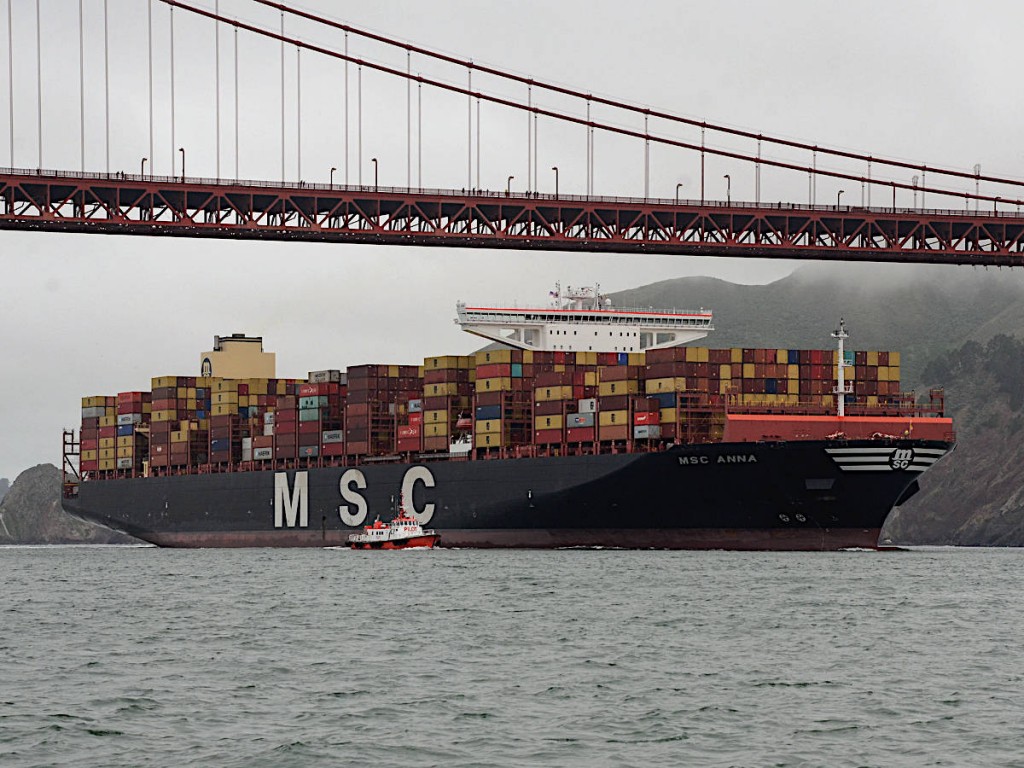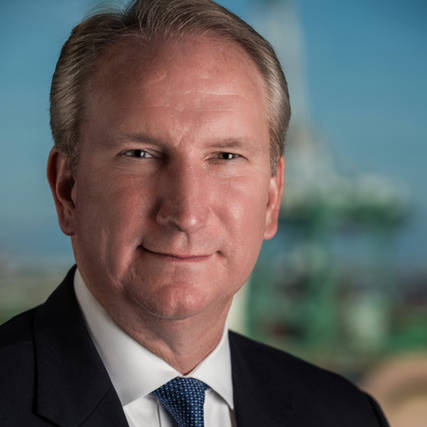Page 1: Covid-19 and the West Coast Response
Page 2: Market Share and Working on the Railroads

Covid-19 and the West Coast Response
The Covid-19 pandemic has placed an enormous amount of unexpected pressure on the West Coast ports and the connecting supply chain. In late March, Port of Long Beach Executive Director Mario Cordero in an interview with the AJOT said of the crisis, “We are coping with an unpredicted crisis caused by COVID-19 virus and the threats it poses to the supply chain. Adding, “our first priority is the protection of the work force and ensuring that all of the people that work at the Port of Long Beach complex are safe and protected from contamination.”
In the case of Long Beach, the ILWU and PMA agreed to set aside one hour for the cleaning of equipment and machinery between shifts. Although, as Cordero noted, “this means that trucks are backed up at the gates waiting to pick up and deliver containers and so this adds a complication to the process, but so far there have been no serious disruptions.”
Cordero also observed, “We are facing a problem with containers that are not being picked up and are being stranded at the port because of problems with the end user and other dislocations. This situation has prompted calls to relax demurrage rules. We hope that people will not take advantage of the situation. The MTOs [Marine Terminal Operators] are doing their best to keep the flow of containers moving.”

It’s also important to note how the Californian ports, cities and the State are collaborating their efforts during the crisis. Recently, the Port of Los Angeles Executive Director Gene Seroka was appointed Los Angeles Chief Logistics Officer by LA Mayor Eric Garcetti. As the chief logistics officer, Seroka says expediting medical supplies “is at a crisis stage.”
While maintaining his duties as the Port’s executive director, Seroka now also leads a team expediting deliveries of critical health care and emergency supplies into the hands of those who need them most. Seroka outlined the responsibilities and challenges he and his staff are facing. A major goal of the group is to continue the fast importation of medical supplies and goods through “our airport and seaport in Los Angeles.”
Seroka said, “We are looking to source new supplies from manufacturers including N95 respirator masks and surgical masks, gowns, face protection, ventilators, and equipment used for intravenous drips. We are coordinating these efforts with the Hospital Association of Southern California, Los Angeles County Department of Public Health, City of Los Angeles public health officials and local hospitals. We are seeking to understand the needs, not compete for sourcing with the goal of aggregating demand.”

His office is supporting new manufacturing and distributing of face shields, masks, gowns and personal protective equipment (PPE): “We are working with the California Manufacturing and Technology Association to find companies to either produce these products or retool to produce these products.”
Seroka is also working with “the Harbor Trucking Association (HTA) and its president, Weston LaBar, as well as with Alex Cherin, executive director of the California Trucking Association (CTA). We are staying close to the trucking industry and have periodic conference calls.”
His office is “relying on the support of eighteen dedicated volunteers from City of Los Angeles departments who are helping to coordinate these efforts.”
Working through the Port of Los Angeles, “we have been able to obtain additional supplies of masks and sanitary equipment that we have been distributing to harbor truck drivers as well as to the Teamsters Union members. While the Teamsters represent only a small percentage of the harbor drivers, they represent workers in a number of different fields and have been supporting our outreach efforts.”
As part of the selection process, “we have had to discard 95% of the leads and offers we receive, because they do not perform or match up to requirements.” In some cases, Seroka is seeing “counterfeit producers and a number of opportunists trying to take advantage of the situation. The result is that we have identified the 5% of those contacting us who can provide good faith sourcing of product… we have benefitted from the personnel and experience of the (Los Angeles) Emergency Management Department.”
It is important to note that “while we are focusing on frontline workers such as doctors, nurses and EMTs, we also need to be supplying janitors and other hospital workers. In addition, there are a number of other workers who also play a critical role. They include construction workers, food service workers, bank employees, truck drivers and others.”
In Northern California, another Covid-19 supply chain effort is under way as a number of freight forwarders, customs brokers, stevedores and U.S. Customs officials are working together with truckers, longshore labor and Port of Oakland officials to expedite import containers reaching end users - especially those that contain medical supplies and other important products during the Coronavirus emergency.
The maritime logistics group is primarily focused on the Port of Oakland but could expand to include participants at other California ports.
In interviews with AJOT, the participants have emphasized the importance of a team work approach between maritime partners, U.S. Customs and other federal and regulatory officials.
They say that shelter-in-place mandates for working at home and shutting down offices and businesses will place stresses on the supply chain that are likely to worsen as the restrictions continue into the months ahead. However, as their businesses are associated with port operations that are essential in the movement of goods, port stakeholders are necessarily exempt from the mandate and so as to continue facilitating trade.
Two priorities have emerged from discussions within the group:
- Expedite U.S. Customs clearances of priority containers including medical supplies and sanitary products so as to reach end users in the U.S. as soon as possible.
- Share information between stevedores, customs brokers, freight forwarders, truckers, Port of Oakland officials and U.S. Customs officials so as to identify potential bottle necks and anticipate challenges caused by health mandated shut downs.
By planning ahead and instituting a task force approach that includes all maritime partners operating at the Port of Oakland, the participants believe, dislocations can be minimized and the public can have the confidence that the maritime industry will serve the public interest at this time of crisis.





